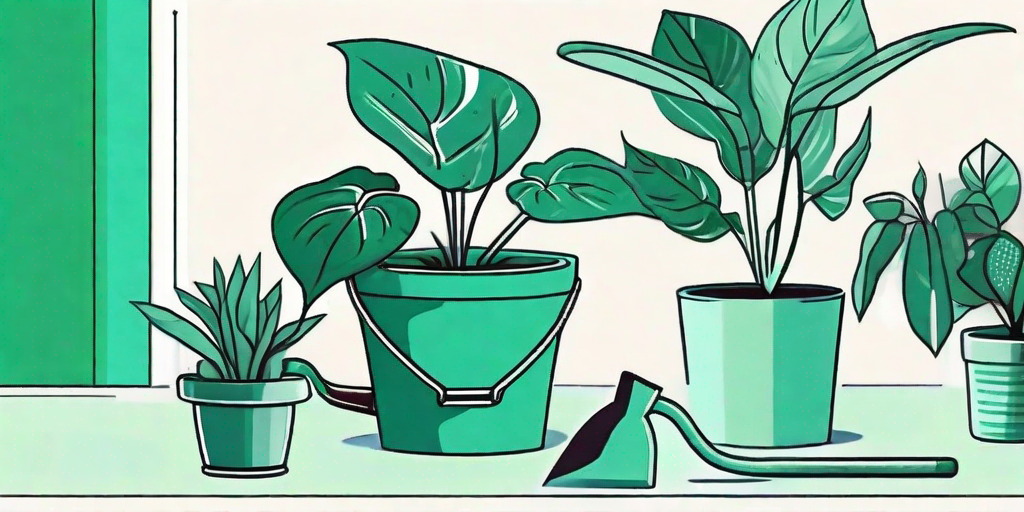
Ah, the Philodendron, a plant that's as fun to say as it is to grow. But what happens when your leafy friend starts to look a bit...under the weather? Fear not, dear reader, for we have the solution: repotting. This isn't just a case of chucking your plant into a new pot and hoping for the best. Oh no, there's a science to it. So, grab your gardening gloves, your sense of humor, and let's get down to the nitty-gritty of repotting your Philodendron.
Why Repotting Matters
First things first, why does repotting matter? Well, imagine you've been living in the same pair of shoes for years. They're comfortable, sure, but they're also a bit snug. Your toes are squished, you can't move around freely, and let's not even talk about the smell. That's what your Philodendron is experiencing in its old pot. Repotting gives your plant room to grow, breathe, and thrive.
Plus, repotting also gives you a chance to refresh the soil. Over time, soil loses its nutrients, which are essential for plant growth. By repotting, you're essentially giving your Philodendron a five-star meal. Who wouldn't want that?
When to Repot
Now that we've established why repotting is important, let's talk about when to do it. You can't just repot willy-nilly. There's a time and a place for everything, including repotting your Philodendron.
Generally, the best time to repot is during the growing season, which for most plants is spring or early summer. This is when your Philodendron is in its prime, ready to spread its roots and take on the world (or at least, its new pot).
But how do you know if your Philodendron is ready to be repotted? Look for signs of root crowding, such as roots growing out of the drainage holes or circling the surface of the soil. If your plant is wilting despite regular watering, or if it's growing slower than usual, it might be time for a new pot.
How to Repot
Alright, enough chit-chat. Let's get to the fun part: repotting. Don't worry, we'll guide you through it step by step. Just remember, this isn't a race. Take your time, be gentle, and your Philodendron will thank you.
Step 1: Choose the Right Pot
Choosing the right pot is crucial. You want something that's about 2 inches larger in diameter than the current pot. This gives your Philodendron room to grow without overwhelming it. Also, make sure the pot has good drainage. Philodendrons don't like wet feet, and neither do you, we presume.
Step 2: Prepare the Pot
Before you plop your plant into its new home, you need to prepare the pot. Fill it about one-third of the way with fresh, high-quality potting soil. This will give your Philodendron a nutrient boost right off the bat.
Step 3: Remove the Philodendron from Its Current Pot
This is where things get a bit tricky. You want to remove the Philodendron from its current pot without damaging the roots. The best way to do this is to gently tip the pot sideways and ease the plant out. If it's stubborn, you can tap the bottom of the pot to loosen it. Remember, be gentle. This isn't a wrestling match.
Step 4: Place the Philodendron in the New Pot
Now, place your Philodendron in the new pot. The top of the root ball should be about an inch below the rim of the pot. This gives you enough room to add more soil without it spilling over the edge.
Step 5: Add More Soil
Finally, add more soil to the pot, filling in the gaps around the root ball. Press the soil down gently to remove air pockets, but don't compact it too much. You want the soil to be firm, but still fluffy enough for the roots to spread.
Post-Repotting Care
Phew, you did it! You've successfully repotted your Philodendron. But the job isn't over yet. Post-repotting care is just as important as the repotting process itself.
After repotting, water your Philodendron thoroughly. This helps settle the soil and gives your plant a much-needed drink. Then, place your plant in a spot with indirect light. Direct sunlight can be too harsh for a newly repotted plant.
For the next few weeks, keep an eye on your Philodendron. It might go through a bit of shock after being repotted, but don't worry, this is normal. Just keep it watered (but not too watered), and it should bounce back in no time.
FAQs
- How often should I repot my Philodendron?
Generally, you should repot your Philodendron every 2-3 years. However, if your plant is growing rapidly, you might need to repot it more often.
- What kind of soil should I use for my Philodendron?
Philodendrons prefer well-draining soil. A good mix is one part perlite, one part peat moss, and one part potting soil.
- My Philodendron looks droopy after repotting. What should I do?
Don't panic! It's normal for plants to go through a bit of shock after being repotted. Keep it watered and in indirect light, and it should recover in a few weeks.
And there you have it, folks. Everything you need to know about repotting your Philodendron. Remember, repotting is a labor of love. It might take a bit of time and effort, but the result—a thriving, happy Philodendron—is well worth it. Happy gardening!















